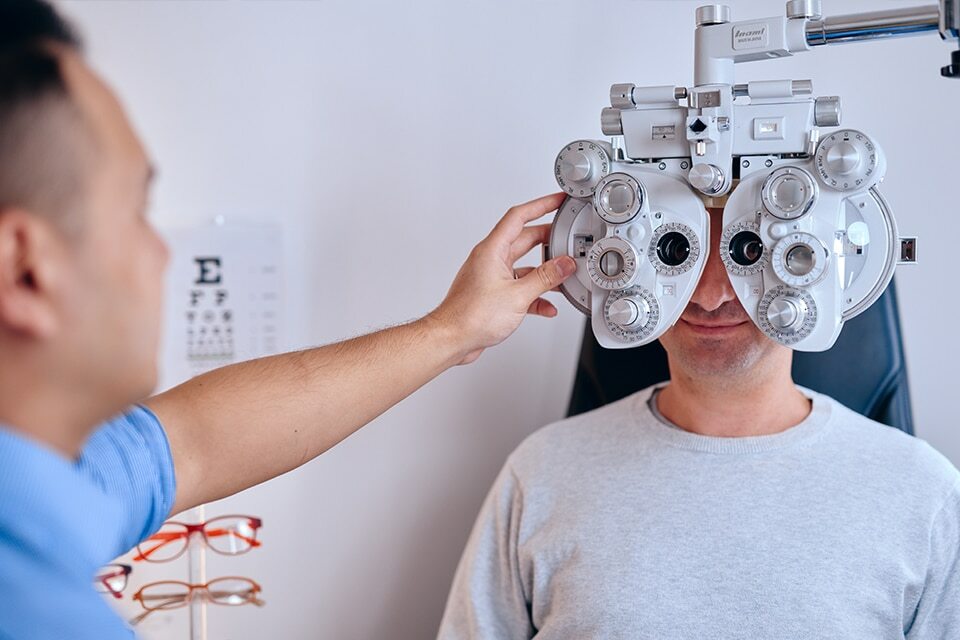Eye Test FAQs

Everyone should have an eye exam once every two years and for those over 50, once a year. Book an eye test near you today.
An eye test is important because many eye diseases occur slowly over a period of years, and often they show little or no symptoms until the damage has already been done to a person’s eyes.
A comprehensive eye test does more than check the strength of your vision, it evaluates the health of your eyes. An eye test done by your local optometrist will check for …
- Your ability to see far away and close up
- Amblyopia (lazy eye)
- Macular degeneration
- Diabetic retinopathy
- Cataracts
- Glaucoma
- Focusing ability (presbyopia)
An eye test conducted by your local Eyecare Plus optometrist will take approximately 30 to 45 minutes.
Medicare benefits are payable for most consultations. Some additional fees apply for services that are not covered by Medicare. Eyecare Plus staff will be able to explain the fees and if there is any gap that needs to be paid.
Tell your optometrist the medications you are taking. If you are experiencing any blind spots, flashes of light, blurry vision, change in vision or if you have had a head or eye injury (even a minor one) be sure to tell your optometrist so they know are better informed and able to treat you accordingly.
An eye test assesses the overall health of your eyes. A contact lens consultation is required in addition to the eye test. During the contact lens consultation, the optometrist measures the curve of the cornea, size of the pupil and ensures that the lenses you get are fitted properly.
Optometrists recommend eye tests at 1, 3 and 5. It is vital to have your child’s eyes checked before they start school. Often, children are labelled as ‘slow-learners’ or ‘trouble-makers’ when they just have poor vision that can easily be corrected.
To prepare for an eye test, be sure to have your current eye prescription and a list of any medications you are currently taking.
You should bring your current prescription glasses plus (if you wear them) your contact lenses and prescription. It is also a good idea to bring sunglasses – if your pupils are dilated during the test, your eyes will briefly be more sensitive to light. Finally, remember to bring your Medicare and health insurance card.
No, an eye test is completely pain-free.
Your glasses prescription has a column for the left eye and a column for the right. Each column includes SPH (sphere) — the power of your lens; CYL (cylinder) — the amount of astigmatism; Axis —where the astigmatism is on your eye; ADD — additional lens power; Prism — if you have double vision; and PD — pupillary distance.